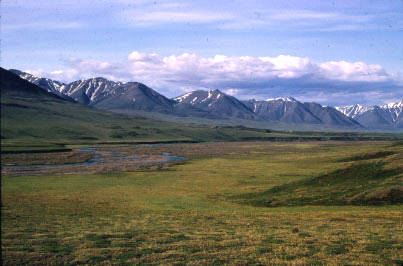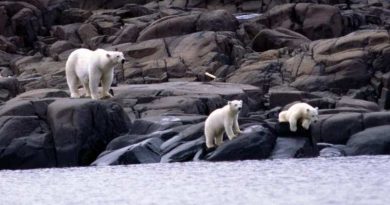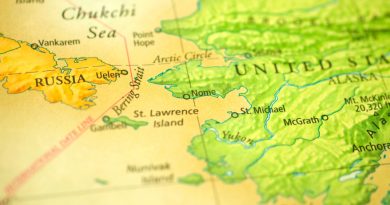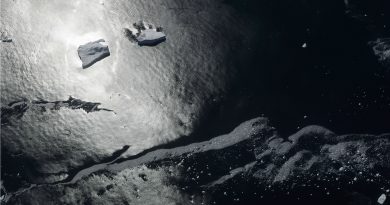Arctic tundra transforming into forest much quicker than expected
 Rising summer temperatures have triggered an arboreal facelift across a vast swath of Eurasian tundra, transforming patches of Arctic prairie into forest much faster than scientists ever thought possible.
Rising summer temperatures have triggered an arboreal facelift across a vast swath of Eurasian tundra, transforming patches of Arctic prairie into forest much faster than scientists ever thought possible.
Instead of trees slowly invading from the south over the course of centuries, stands of existing dwarf willows and alders have responded to the changing climate on their own — growing up and branching out into groves of small trees during mere decades, according to a new detailed analysis published this week in the journal Nature Climate Change.
“It’s a big surprise that these plants are reacting in this way,” said lead author Marc Macias-Fauria, with Oxford University’s Department of Zoology and the Oxford Martin School, in this story posted by Oxford.
The study is part of a growing body of research into the terra-forming of the Arctic by climate change, with scientists across the world documenting the dramatic spread of shrubs and trees into formerly low-growing tundra on a scale not seen in thousands of years.
Arctic warming accelerating
To get some sense of what’s going on, check out before-and-after photos of tundra (here and here), along with the color shots of tundra posted in the article Shrub Takeover One Sign of Arctic Change published on NOAA’s Climate Watch magazine.
“Previously people had thought that the tundra might be colonized by trees from the boreal forest to the south as the Arctic climate warms, a process that would take centuries,” Macias-Fauria said here. “But what we’ve found is that the shrubs that are already there are transforming into trees in just a few decades.”
The speed and scale of the change reported in the latest study — as much as 15 percent of the willow and alder in the area had bloomed into six-foot-high groves over 30 to 40 years — suggests that Arctic warming has the potential to dramatically accelerate, while creating new woodsy ecosystems in the process.
Since forested areas absorb more solar energy than grassy tundra, the spread of trees will also help jumpstart warming — some climate models predict an extra two to four degrees Fahrenheit. This temperature rise, in turn, will promote even more forest growth.
Along with Bruce Forbes of the University of Lapland’s Arctic Centre and others, Macias-Fauria investigated the plant growth over about 38,000 square miles along the Eurasian Arctic tundra, from central Siberia to Finland, using both vegetation surveys and satellite images. Contributing to the study were “expert observations” from Nenets reindeer herders, both east and west of the Polar Ural Mountains. They told the scientists that the emergence of tree-sized willows had been forcing them to change age-old herding practices.
Don’t blame sea ice retreat
One insight: the shift underway doesn’t appear to be directly triggered by loss of sea ice. “Our results strongly suggest that recent sea-ice retreat has had a limited influence on tundra productivity in the region, and that the growth of tall shrubs is ultimately related to the position of continental air masses in July,” the scientists wrote in the paper.
In the end, they concluded that a “significant ecosystem transformation” has been launched. If the trend continues, the Arctic may actually start to more closely resemble the ecological conditions last seen in Beringia 10,000 years ago, a time when lowered sea levels connected Asia to North America with a 1,000-mile-wide land bridge.
“Patterns of response to climate by Low Arctic shrub vegetation — mainly willow but also alder at one site — suggest that a rapid transition is already underway,” the authors wrote, “which has analogues in the northern Eurasian palaeoecological record from the early Holocene, and is likely to take place in the remaining tundra regions as Arctic warming progresses.”
These evolving developments in Siberia may be harbingers for other Arctic regions, including Alaska, once the far-eastern reach of the Beringia’s Mammoth Steppe.
“Of course this is just one small part of the vast Arctic tundra and an area that is already warmer than the rest of the Arctic, probably due to the influence of warm air from the Gulf Stream,” Macias-Fauria explained here. “However, this area does seem to be a bellwether for the rest of the region, it can show us what is likely to happen to the rest of the Arctic in the near future if these warming trends continue.”
Contact Doug O’Harra at doug(at)alaskadispatch.com
For more stories from Alaska Dispatch, click here



